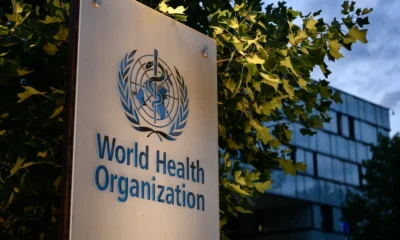Health Care
Improve Your Well-being: 12 Night Shift Healthcare tips for a Balanced Lifestyle

In the event that you’re one of America’s 15 million night shift laborers, you might confront the notable test of making and keeping a solid daily practice. For every one of the advantages of working night shift, it tends to be interesting to lay out a normal that permits you to get adequate rest, sustenance, and exercise.
We should bring a profound jump into how to function night shift and remain solid simultaneously with our top ways to work night shift.
Why Night Shift Healthcare Is Essential
Night shift healthcare is important because the human body is administered by an in-assembled circadian cadence that lets us know when to be dynamic and when to rest. This normal timetable assists us with delineating our constantly and decides how our stomach related framework, internal heat level, and pulses are managed.
The vast majority work during the day when we’re normally prepared for action. On the other hand, night shifts conflict with the organic grain, and can upset the body’s example. While there are many advantages of working night shift, this interruption can be hard to survive.
Thusly, it’s vital that evening shift laborers find additional ways to deal with their wellbeing and stay away from issues that are connected to night laborers, for example, diabetes, coronary illness, weight gain and, surprisingly, emotional well-being issues. All things considered, assuming that the right advances are taken, there’s no great explanation for why night shift laborers can’t live strongly and cheerfully in their timetables.

Best Night Shift Healthcare Tips You Should Follow
- Bunch moves together
Where conceivable, it merits attempting to bunch your shifts with the goal that your body becomes accustomed to your timetable. Pivoting movements can be incredibly challenging to conform to, and may prompt consistent sleepiness as your body plays find the evolving design.
While it’s not generally simple to decide your shift design, ensure you utilize your last free day to keep awake until the last possible minute to prepare for your most memorable night shift.
- Eat nutritious feasts
Many shift laborers fall into the justifiable snare of eating to remain alert or getting cheap food – feasts that are promptly accessible at throughout the hours. It makes sense that this might be the reason night shift work has been related with expanded metabolic issues, like diabetes and coronary illness.
To remain sound, set up your feasts ahead of time to ensure you’re eating a strong three dinners during your wake hours. Incorporate a lot of protein, as well as green verdant vegetables. For your shift, pack sound bites, for example, high-protein energy bars, as opposed to sweet treats that will give you a spike in energy followed by a rut.
- Remain hydrated
One of the best Night Shift Healthcare tips is drinking enough water and remain Hydrated!! Eating strongly remains inseparable with keeping your hydration steps up. Attempt and stick to water as opposed to the high-sugar soft drinks, with the goal that your body stays controlled as well as could be expected.
Preferably, intend to hydrate each day to guarantee supplements are conveyed to cells, your organs are kept useful, and your internal heat level is kept up with.
- Focus on rest
Rest is your body and psyche’s regular approach to fixing itself. All things considered, the night shift laborer’s test is that while they’re attempting to rest, their loved ones are orchestrating parties that can be difficult to turn down.
Remain fixed on the motivations behind why you really want to adhere to your timetable and the significance of rest. Lack of sleep is demonstrated to have serious ramifications for your wellbeing and prosperity, both in the short and long haul.
- Practice great rest cleanliness
To focus on rest, you really want to track down the right methods to guarantee you augment rest when you get it. This can begin with establishing a climate that is helpful for a soothing night’s lay down with things, for example, power outage blinds, ear plugs, agreeable sheets and covers.
Then, lay out a normal that helps support your rest. This might remember a splash for the shower before bed, a screen and blue light boycott an hour prior planned rest, perusing a decent book, running a repetitive sound and wearing an eye cover. Everything can assist with keeping up with great rest cleanliness so your body and brain know when now is the right time to rest.
- Work out is essential for Night Shift healthcare
One of the most outstanding ways to work the night shift and remaining solid is to focus on work out. As currently talked about, night shift work might build your possibility becoming overweight, and creating coronary illness and diabetes. To assist battle against these dangers, you with needing to lay out a predictable activity program.
Track down an exercise routine that you appreciate and ideally one that includes both cardio and strength preparing. Ensure it’s something that you can do reliably, regardless of whether it’s only ten minutes of the day.
- Watch your caffeine and sugar consumption
While working night moves, it’s not difficult to go after caffeine and sugar to push you along when energy levels plunge. Also, there are demonstrated advantages to caffeine; caffeine can work on your psychological and actual wellbeing, when consumed with some restraint.
An excessive amount of sugar can be horrendous to your prosperity, as it plays destruction with your energy levels and insulin creation over the course of the day. Caffeine as well, when consumed in overabundance, can prompt ruts in energy, low quality rest and longer term unexpected problems.
All things considered, focus on entire food snacks instead of sweet treats, and drink mostly water, especially as you’re approaching your rest window.
- Foster a daily practice
Considering that you’re neutralizing your regular circadian cadence, producing a standard that keeps you on track is principal. Set out your 24 hours to incorporate sufficient time for rest, for taking care of oneself, for dinners, and for associating, as well as your compulsory undertakings like housework and shopping.
- Stay away from liquor
It’s enticing to involve liquor as a tranquilizer, regardless of whether it’s simply a glass or two of wine. The issue is that liquor will more than likely disturb your REM rest – the rest you really want to guarantee you’re invigorated and prepared for the afternoon (or night) ahead!
- Rest (carefully!)
Not every person is a rest kind of individual, however on the off chance that you love a decent rest, one of the advantages of working night shift is the capacity to re-energize before your shift. “Rest is most important for Night Shift Healthcare”
An expression of caution, in any case: Be cautious about when you rest and for how long. Hold your rest to something like 30 minutes and try not to rest excessively near your sleep time. You might work at a spot that as of now upholds representatives with rests, yet on the off chance that you don’t, consider recommending a rest space as a plan to your HR or supervisory group.
- Get some sun or potentially portion up on vitamin D
Night Shift Healthcare tips are incomplete without this ideal, For the individuals who rest during the day and work for the time being, vitamin D inadequacy can be an issue. Vitamin D, liable for guaranteeing solid bones and muscles, is assimilated by means of sunshine and tracked down in green verdant vegetables. Without it, deficiency of bone thickness, osteoporosis and osteomalacia (agonizing bone torment) can happen.
On the off chance that you’re essentially incapable to get sufficient sunlight during the day, take a high portion vitamin D enhancement to keep your bones sound areas of strength for and.
- Contact others working night shifts
At the point when your timetable is unique in relation to the standard, it can feel confining and desolate. Yet, part of remaining sound is feeling like you’re essential for a steady local area.
Contact your collaborators or other night shift experts on web-based gatherings and offer your encounters and difficulties. On the off chance that you’re considering how to function night shift and remain solid, chances are so are your kindred night shift laborers! You might have the option to approach them for counsel on the most proficient method to deal with your timetable or you could try and get yourself an activity mate to keep you propelled.
Follow our Night Shift Healthcare tips to improve your mental and physical health and overall wellbeing.
For more data related to health of Night Shift Workers
Read our more articles related to healthcare, wellness and fitness
Blog
Disney & Bath & Body Works Unveil Enchanting Princess Collection

Reading Time: 3 minutesIn an exciting new collaboration, Disney is teaming up with Bath & Body Works to launch a brand-new fragrance and body care collection inspired by some of the most beloved Disney princesses. This marks the first major partnership of its kind between the two iconic brands, bringing a magical touch to self-care routines everywhere.
A Fairytale Fragrance Collection
The collection will spotlight six Disney princesses, each with a unique scent crafted to capture their essence and the world they inhabit. From the enchanting aroma of gardenias for Cinderella to the tropical allure of plumeria for Moana, the collection aims to transport fans straight into their favorite Disney fairytales.
Liz Shortreed, Disney’s Senior Vice President for Consumer Products, expressed excitement about the collaboration, emphasizing the personal connection many fans feel toward Disney princesses. “Consumers can choose who they relate to most,” Shortreed said, highlighting how the fragrances were thoughtfully designed to reflect each princess’s personality.
Betsy Schumacher, Chief Merchandising Officer at Bath & Body Works, shared insights on the creative process behind the collection. “We wanted to personify each princess and also think about the environment she’s in. What does it smell like where she is? How do we bring our signature scents into the world of princesses?”
A Grand Selection of Products
The Disney Princess x Bath & Body Works collection will feature 85 different products, offering a variety of options for every fan. Shoppers can expect to find:
- Fine fragrance mists
- Body washes
- Lotions
- Lip glosses
- Candles
- Decorative accessories
Prices for the collection will range from $1.95 to $99.95, ensuring accessibility for every budget. The highly anticipated collection will be available in stores and online starting Sunday, February 16. However, members of Bath & Body Works’ rewards program will get early access through the retailer’s website and app on February 11 and 12.
Bringing Princesses to Life Through Scent
Designers at Bath & Body Works handpicked a princess and immersed themselves in her story, carefully curating scents that encapsulate her spirit. Schumacher expressed admiration for the team’s creative dedication: “It came to life because the designers were able to get into the world of the princesses and truly bring their essence to our products.”
Here’s a closer look at the featured princesses and their signature fragrances:
- Tiana: Inspired by her ambition and perseverance, Tiana’s fragrance features delicate water lily, gilded amber, and shimmering bayou woods.
- Moana: Representing her fearless and adventurous nature, Moana’s scent includes lush green palms, plumeria breeze, and coconut water.
- Jasmine: Embodying her independence and free spirit, Jasmine’s fragrance combines sparkling jasmine flower, jeweled currants, and soft woods with a touch of oud.
- Cinderella: Capturing her optimism and elegance, Cinderella’s scent blends gardenia petals, enchanting musk, and sapphire blue amber.
- Belle: Inspired by her love of knowledge and inner beauty, Belle’s fragrance includes rose petals, sparkling buttercup, and whipped vanilla.
- Ariel: Reflecting her courage and determination, Ariel’s scent features sea salt breeze, golden citrus, and coral waters.

A Future of Enchantment?
With such a dazzling lineup, fans may be wondering if more Disney princesses will join the collection in the future. While nothing is confirmed yet, Shortreed hinted at the possibility of expansion. “We’re obviously hopeful that consumers respond well to it,” she said. “It’s our intent to continue our relationship with Bath & Body Works, so you’ll have to watch this space to see what comes next.”
This collaboration isn’t just about fragrances—it’s about bringing a touch of Disney magic to everyday life. Whether you resonate with the resilience of Ariel, the wisdom of Belle, or the adventurous spirit of Moana, there’s a scent in this collection for every princess at heart.
Where and When to Shop
Mark your calendars! The Disney Princess x Bath & Body Works collection launches on February 16, available both in stores and online. If you’re a Bath & Body Works rewards member, you’ll have the chance to shop early on February 11 and 12 through the retailer’s website and mobile app.
Whether you’re a lifelong Disney fan, a fragrance enthusiast, or simply someone who enjoys a little extra magic in your beauty routine, this collection is set to be a must-have. Get ready to embrace the essence of your favorite Disney princess and step into a world of fantasy and fragrance!
Blog
Nicholas Galitzine Joins Emporio Armani as Fragrance Icon

Reading Time: 4 minutesEmporio Armani has acquainted a new face with its worldwide scent crusade, introducing another time of tastefulness and present day manliness. English entertainer Nicholas Galitzine has been named the worldwide scent diplomat for Emporio Armani, a move that consistently mixes his enamoring on-screen presence with the brand’s tradition of immortal refinement. This declaration matches with the send off of the refreshed More grounded With You Parfum assortment, a scent that exemplifies a refined at this point contemporary allure.
A Rising Star in Hollywood and Style
Nicholas Galitzine has been consistently transforming media outlets with champion exhibitions in movies like Purple Hearts, Red, White and Regal Blue, The Possibility of You, and the hit parody Bottoms. His capacity to carry profundity and genuineness to his characters has enraptured crowds around the world, procuring him a standing as one of the most encouraging entertainers of his age. Presently, his evident appeal and easy style stand out of one of the world’s most esteemed design houses, Emporio Armani.
Armani Magnificence communicated their excitement over the cooperation, expressing, “We are excited to invite Nicholas Galitzine as our new worldwide scent representative. His regular appeal and easy style exemplify the actual quintessence of the Emporio Armani brand.” This organization is supposed to carry a new viewpoint to the scent crusade, reclassifying extravagance for another age of scent lovers.
The Ideal Pair: Galitzine and Emporio Armani
Nicholas Galitzine’s relationship with Emporio Armani appears to be practically predetermined. His ready yet contemporary tasteful adjusts flawlessly with the brand’s character, making him an ideal minister for its aroma line. Whether gracing honorary pathway in customized Armani suits or radiating trust in relaxed environments, Galitzine typifies a feeling of present day manliness that resounds with Emporio Armani’s qualities.
This cooperation likewise flags Emporio Armani’s obligation to mixing exemplary refinement with energetic energy. With Galitzine at the front, the scent crusade is set to engage a different crowd, catching the consideration of both long-term Armani enthusiasts and a more youthful segment anxious to embrace the brand’s particular class.
The Reevaluation of More grounded With You Parfum
The planning of this coordinated effort couldn’t be more great, as Emporio Armani divulges its reconsidered More grounded With You Parfum assortment. Known for its warm, sexy, and profoundly dazzling aroma, More grounded With You has been a #1 among scent devotees since its underlying send off. The refreshed rendition presents a more extravagant, more refined mix that upgrades the scent’s unique notes while keeping up with its unique appeal.
With Galitzine driving the mission, the aroma is supposed to have a considerably more prominent effect. His capacity to easily progress among complexity and receptiveness reflects the substance of More grounded With You — a fragrance that oozes certainty, enthusiasm, and immortal charm.
Another Period of Aroma Promoting
Industry specialists guess that Nicholas Galitzine’s contribution in Emporio Armani’s scent mission will bring a new, unique energy to the brand’s promoting systems. Customarily, extravagance aroma crusades have depended on laid out figures from the style and entertainment worlds. Notwithstanding, Galitzine addresses a shift towards a more contemporary, interesting methodology — one that underscores independence and legitimacy.
His excursion from rising entertainer to worldwide design diplomat mirrors the developing scene of extravagance marking, where character and narrating are just about as fundamental as style. By picking Galitzine, Emporio Armani is embracing another time in which scent isn’t simply an extravagance thing however an expansion of one’s character and individual story.
The Eventual fate of the Association
As Nicholas Galitzine sets out on this new section with Emporio Armani, fans and design aficionados the same are anxious to perceive how this coordinated effort unfurls. The mission, which will carry out internationally, is supposed to highlight a progression of outwardly shocking promotions, computerized content, and restrictive in the background looks into Galitzine’s insight as an Armani representative.
Additionally, his presence in the mission could prepare for additional joint efforts with the brand, possibly stretching out past aromas to different parts of Armani’s style and way of life realm. Given Galitzine’s developing impact in both Hollywood and the design world, this organization is ready to be a vital turning point in his profession.
Determination: A Match Made in Extravagance
Nicholas Galitzine’s arrangement as Emporio Armani‘s worldwide scent envoy is something beyond a business move — it’s a festival of style, charm, and present day manliness. With his irrefutable ability and attractive presence, he is set to hoist the More grounded With You Parfum assortment and cement his position in the realm of high style.
As the mission unfurls, one thing is sure: this joint effort is an ideal mix of immortal tastefulness and contemporary appeal, denoting the start of an interesting new section for both Nicholas Galitzine and Emporio Armani. Fans can anticipate a vivid scent experience that catches the pith of extravagance as well as reclassifies it for another age.
Blog
Hunter Schafer’s Beauty Inspiration The Virgin Suicides & Effortless Glam

Reading Time: 4 minutesTracker Schafer is known for her courageous way to deal with design, continually pushing limits with high-risk, high-reward looks. Working intimately with beautician Dara Allen, she has developed an unmistakable stylish that consistently mixes cutting edge design with classic motivated pieces. Notwithstanding, her joint effort with beautician Jillian Halouska really rejuvenates her magnificence vision. Schafer’s consistently developing hair minutes are rich with references, drawing motivation from social symbols and artistic works of art.
At Paris Couture Week, where dream and gentility became the overwhelming focus, Schafer showed up at Ludovic de Holy person Sernin’s visitor assortment for Jean Paul Gaultier. She completely embraced the show’s ethereal and insubordinate subjects, wearing a plunging white ribbon peplum top matched with trimmed erupted jeans and dark pattern heels. Her hair was a pivotal piece of the troupe, radiating an easily scattered, somewhat turbulent charm.
As per Halouska, Schafer’s hairdo was a blend of two notorious motivations: the unique, brave energy of a privateer (suggestive of Keira Knightley’s personality in Privateers of the Caribbean) and the grit mixed, nonchalant tasteful of Kate Greenery during her party-young lady time. The outcome was a disheveled, incompletely ideal outpouring of waves that felt both hot and casual.
Creating the “Flawed but still great” Hairdo
To accomplish this look, Halouska utilized a munititions stockpile of styling items, including Oribe Gold Desire Sustaining Hair Oil for sparkle, Endlessly blunder Sumo Fluid Wax Splash for surface, and various hair curlers to make different wave designs.
She twisted irregular segments of Schafer’s hair with various estimated irons, then, at that point, roughened the waves utilizing the cool setting on a blow dryer to give a normally windblown impact. A few strands were left straighter, while others were scrunched to make a complex surface. A liberal utilization of hair oil gave the style a lived-in quality, while the splash wax at the roots permitted the hair to flip easily aside. At last, Halouska cut a couple of face-outlining parts of wrap over Schafer’s eye, adding a demeanor of secret and free enterprise class.
“It’s a tribute to defect,” Halouska made sense of. “It’s attractive, easy, and appears as though she’s simply ventured off the dance floor following an inconceivable evening out on the town.”
An Eccentric Look Enlivened by The Virgin Suicides
Schafer kept on trying different things with her excellence stylish sometime thereafter at an advantage for Helps noble cause Sidaction. She diverted an ethereal, nearly pixie like style in an off-the-shoulder cream Jean Paul Gaultier dress, which she matched with an organized dark calfskin coat for a striking difference.
For this look, her hair was styled in lengthy, streaming waves with fragile miniature plaits outlining her face. Halouska took motivation from Sofia Coppola’s famous film The Virgin Suicides, which has for some time been a most loved reference in the style world for its marvelous, nostalgic stylish.
To accomplish this delicate, heartfelt look, Halouska applied Shu Uemura Grease to add sparkle and utilized Sisley Hairspray to structure the interlaces while keeping a characteristic vibe. Endlessly blunder Stylist’s Imperceptible Oil Lightweight Sparkle Completing Splash was then clouded over the hair to upgrade its non-abrasiveness and development.
The Specialty of the Ideal Miniature Plait
Miniature plaits, however apparently easy, require accuracy. Halouska shared a few fundamental ways to accomplish Schafer’s fragile face-outlining meshes.
Clean Splitting: Utilize a fine-tooth look over to make a perfect segment for the interlaces.
Secure Strands: Use barrettes to keep the remainder of the hair far removed while twisting.
Use Styling Glue: Applying a modest quantity of grease or styling glue to fingertips prior to twisting guarantees a smooth completion and forestalls flyaways.
Anchor the Plait: Begin the twist at the hairline, taking care of in just top segments for a complimenting, face-outlining impact.
Secure It: Proceed with the twist until the scruff of the neck and secure it prudently with a pin for a consistent mix.
By following these means, Halouska guaranteed that Schafer’s miniature interlaces remained in one piece without looking excessively solid or over-styled. The outcome was an impeccably adjusted look — fragile, idyllic, and inconspicuously fun loving.
Tracker Schafer’s Consistently Advancing Magnificence Tasteful
Schafer’s capacity to sway between various magnificence personas makes her such an astonishing style symbol. From the alarm like disheveled waves at Paris Couture Week to the unconventional, practically powerful miniature plaits at the Sidaction benefit, her looks generally recount a story.
Halouska summarized it impeccably: “Her hair has its very own character — it’s lively, alluring, and nostalgic, yet still feels extraordinarily present day.”
The previous spring at the Cannes Film Celebration, Schafer shocked in a milkmaid-motivated white cut skirt dress, finished off with a beguiling Prada headscarf. Whether she’s directing a 90s It-young lady, a realistic ingénue, or a defiant privateer, her magnificence decisions remain refreshingly startling and easily cool.
With Schafer’s daring way to deal with style, one can ponder — what film, period, or social reference will rouse her next groundbreaking excellence second?
-

 Health Care2 years ago
Health Care2 years ago7 Surprising Ways to Lower Cholesterol Naturally – No Medication Needed
-

 Health Care2 years ago
Health Care2 years agoPink Eye(Conjunctivitis): What Is Commonly MISDIAGNOSED As PINK EYE?
-

 Celebrity2 years ago
Celebrity2 years agoRelationship Lessons from Jennifer Lopez and Ben Affleck
-

 Entertainment1 year ago
Entertainment1 year agoAustin Abrams Discusses ‘Wolfs,’ Future Projects, and ‘Euphoria’ Season 3
-

 Entertainment2 years ago
Entertainment2 years agoZendaya Opens Up About Racy Scenes and Family Reactions in New Film
-

 Entertainment2 years ago
Entertainment2 years agoZendaya and Tom Holland kiss at The London Challengers premiere.
-

 NEWS2 years ago
NEWS2 years agoIs Trump Going To Jail? Your Questions About Trump’s Trial Answered
-

 Entertainment2 years ago
Entertainment2 years agoChris Martin and Dakota Johnson reportedly got engaged years ago
















